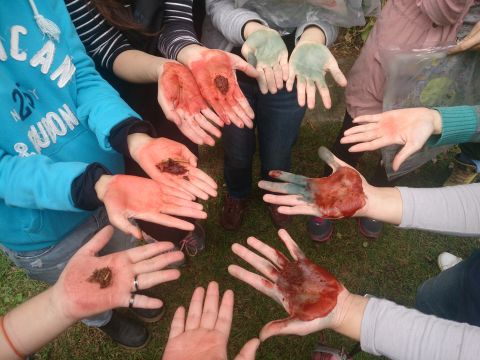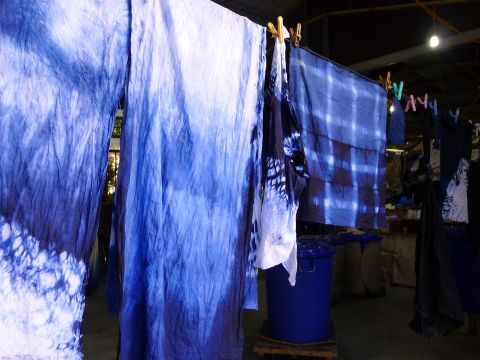Indigo as Pedagogy
Starting 2012, the TNUA Centre for Traditional Arts (CTA) initiated a series of field courses, including indigenous boat making, bark cloth making, banana fiber crafts, ritual parades etc.; the course of ‘Natural Dyeing’ was one of them. These courses aimed to bring students out of the classroom to learn from the soil and different people who give life to traditional arts, and to learn how traditional arts are related to the society and their generation. The 2013 course of ‘Natural Dyeing’, conducted with many partners, was divided into three main stages. The first stage in the campus workshop, was to learn the basic process of making indigo dye and other natural dyes. The second stage was conducted in the workshops of indigo artists in central Taiwan. In the third, the group was back to the classroom together with the invited partner indigo artists to discuss students’ works. In one of the classes, the topic of ‘gender’ was introduced to the students when they were learning craft skill and developing their works.
Later in 2014, the CTA organized Indonesian indigo Batik workshops as well as guest lectures with particular topics on disaster resilience, heritage preservation and community development. Through these practices, we realized that Indigo is not only a dyeing craft, but an instrument for education, for grueling generations and people in diversity, and for art students to reflect upon issues which had never been considered of relevance to them. Since then, the indigo practitioners, craft institutes and researchers we worked with have become our important partners on many other educational programs.


